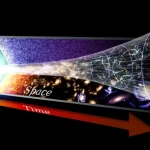Key Takeaways:
- The first-ever direct image of a black hole’s event horizon was captured in 2019, confirming Einstein’s theory of relativity.
- A mind-bending video by YouTuber morn1415 explores the epic scale of the M87 black hole, offering stunning visual comparisons.
- Any matter can become a black hole when crushed past its Schwarzchild radius, illustrated by the fact that our Sun would need to be compressed to the size of a small town.
- Various known black holes, such as XTE J1650-500 and M82 X-1, are described in terms of size and mass, showcasing the incredible diversity in the universe.
- Supermassive black holes, like the one at the center of the Phoenix galaxy, exhibit mind-boggling masses, emphasizing the vastness of these celestial entities.
A groundbreaking achievement in astrophysics as scientists captured the inaugural direct image of a black hole’s event horizon in 2019. This monumental discovery not only fulfilled scientific expectations but also served as a resounding confirmation of Einstein’s theory of relativity.
To truly grasp the significance of this achievement, one must consider the mind-bending scale of the M87 black hole. A captivating video created by YouTuber morn1415 provides a visual journey that, despite its initially dramatic tone, offers a compelling perspective on the colossal size of these cosmic phenomena.
Understanding black holes begins with the realization that any form of matter can undergo black hole transformation if compressed beyond its Schwarzchild radius. To illustrate this concept, it’s intriguing to contemplate that our own Sun would need to be compressed to the dimensions of a small town to become a black hole, while Earth would be reduced to the size of a peanut.
The exploration of known black holes introduces fascinating variations in size and mass. Take XTE J1650-500, for instance, comparable to the size of Manhattan yet containing the mass of three or four Suns. Similarly, M82 X-1 is crushed down to the size of Mars, housing the mass equivalent of 1,000 Suns.
The cosmic diversity doesn’t end there. Supermassive black holes, residing at the hearts of massive galaxies, represent an entirely different scale of enormity. The Phoenix galaxy, for example, hosts a supermassive black hole with a mass equivalent to 20 billion Suns. In comparison, the recently imaged M87 black hole weighs in at approximately 6.5 billion times the mass of our Sun, a staggering figure even if slightly dwarfed by its Phoenix counterpart.
As we delve into these celestial wonders, it becomes clear that the universe’s vastness is mirrored by the incredible range in the sizes and masses of black holes.


